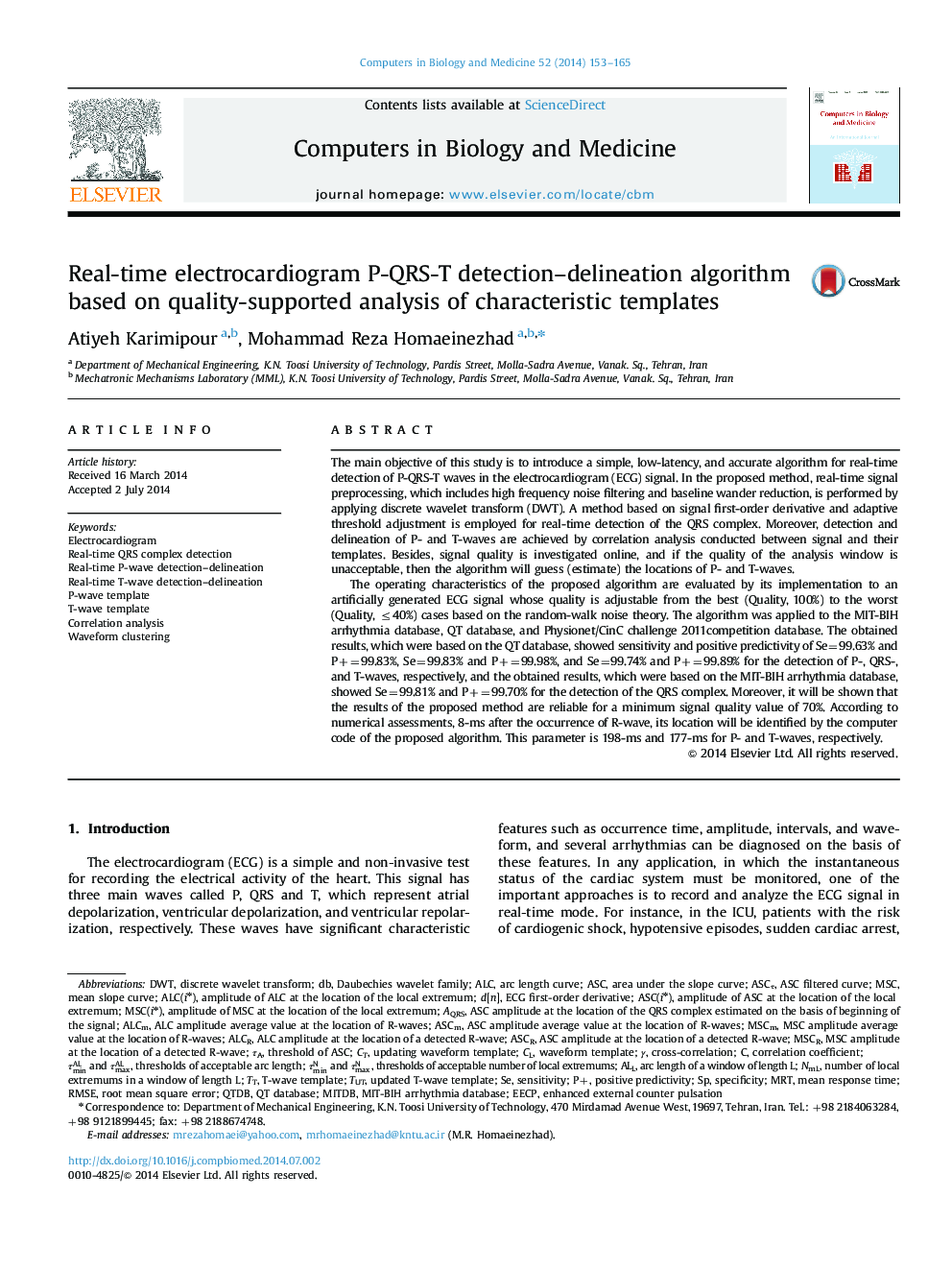| Article ID | Journal | Published Year | Pages | File Type |
|---|---|---|---|---|
| 6921572 | Computers in Biology and Medicine | 2014 | 13 Pages |
Abstract
The operating characteristics of the proposed algorithm are evaluated by its implementation to an artificially generated ECG signal whose quality is adjustable from the best (Quality, 100%) to the worst (Quality, â¤40%) cases based on the random-walk noise theory. The algorithm was applied to the MIT-BIH arrhythmia database, QT database, and Physionet/CinC challenge 2011competition database. The obtained results, which were based on the QT database, showed sensitivity and positive predictivity of Se=99.63% and P+=99.83%, Se=99.83% and P+=99.98%, and Se=99.74% and P+=99.89% for the detection of P-, QRS-, and T-waves, respectively, and the obtained results, which were based on the MIT-BIH arrhythmia database, showed Se=99.81% and P+=99.70% for the detection of the QRS complex. Moreover, it will be shown that the results of the proposed method are reliable for a minimum signal quality value of 70%. According to numerical assessments, 8-ms after the occurrence of R-wave, its location will be identified by the computer code of the proposed algorithm. This parameter is 198-ms and 177-ms for P- and T-waves, respectively.
Keywords
Related Topics
Physical Sciences and Engineering
Computer Science
Computer Science Applications
Authors
Atiyeh Karimipour, Mohammad Reza Homaeinezhad,
